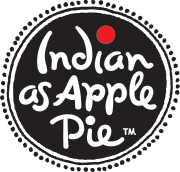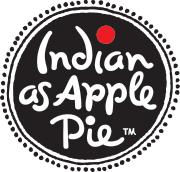February 29, 2024


I'M NOT GOING TO LIE - BEANS CAN BE CONFUSING. Until that ah-hah moment sets in. And, I promise, if you stick with me, it will. Before we talk about what Chana Dal is - the theme of today's Grocery Corner post, let's chat about that category of food that few in the West seem to get. As I was preparing for this post, I searched Chana Dal on a wholesaler's website and it was listed as 'Chana Dal Peas' - which makes no sense. It's technically a bean and this makes it super confusing because it looks just like a yellow pea. So what is it?
Is it a bean? A lentil? A pea? And does it even matter? The reality is that anything that grows in a pod is a legume - also called pulses and in India dal. Peanuts grow in pods and are legumes - they are not a nut. The seeds that grow in that pod are what we consume. Those seeds can be quite varied in taste and shape. Only a truly spherically-shaped and flat one is considered a lentil. If it's not a lentil then it's a bean or pea. It does not make a huge difference if you call a lentil a bean or vice versa, but once you start making this distinction it helps to determine how to cook whatever you are making and how much water you'll need. A kidney bean will require a different amount of water and cook time than say the orange lentils sold at most mainstream grocery stores.
In Indian cuisine we cook with legumes in a more varied way than any other cuisine out there. Many whole legumes are consumed in various forms. We will eat it in the whole form with the skin, whole without the skin, split with the skin, and split without the skin. There are some exceptions, but generally you'll find 3-4 forms of the same base legume. Why this is important to understand? Well, because each form requires a different cook time and amount of water. The more processed - split and skinned - the less water and cook time required. The taste also varies.
And this brings me to Chana Dal. Let's break the name down. Chana means chickpea. But, it's not the chickpea that you are thinking of - it's a small, black chickpea that we love in Indian cuisine. The Dal reference comes from the idea that this chickpea, once the skin is removed and it is split in half, essentially looks and feels like a typical 'lentil' which we make into a dal. It's deceiving -- and if you look at a bag of it, you'll think that it's just a lentil of split yellow peas. But, it's not - it is a little more wrinkled, it cooks up differently, and is unique for its nutrition.
Chana Dal is one of the lowest glycemic index (GI) foods to exist - with an index of 8. What this means is that it does not spike your blood sugar when you eat it even though a majority of its calories come from carbohydrates. Even many vegetables log a GI of 14 and above. This means that this is a dal you want to truly get into your weekly rotation if you want to enjoy a plant-based diet with minimal blood sugar bursts. If you are diabetic, this is a fantastic ingredient. You can make an Indian Dal out of it, cook it and sprinkle it over salads, spice it and roast it in the oven as well for a healthy snack. Remember, any significant dietary changes should be made after consulting with your doctor.
If you are yet to be convinced that pulses - legumes - beans/lentils/peas are an important component for a healthy diet, I would encourage you to listen to this podcast about so-called blue zones and what they do differently to live longer. This was one of the first time I've heard a Westerners' positive take on legumes for fiber and protein. Usually in the West we are told that legumes are carbs and to cut back on them. Here, it's argued that the protein and fiber from this plant-based source is critical to longevity and feeling fuller - along with many other suggestions. In India we already know much of this, but I say to my own community that we need to be reminded of these simple food principals and to tap back into our eating and food roots. In my own health-eating journey, I have focussed on eating dal daily and it has made a huge difference in keeping me on a healthy eating track and away from processed foods.
I truly hope this was helpful. And, know that I'm here to answer any questions. Keep cooking and keep eating delicious legumes, folks!
Comments will be approved before showing up.

